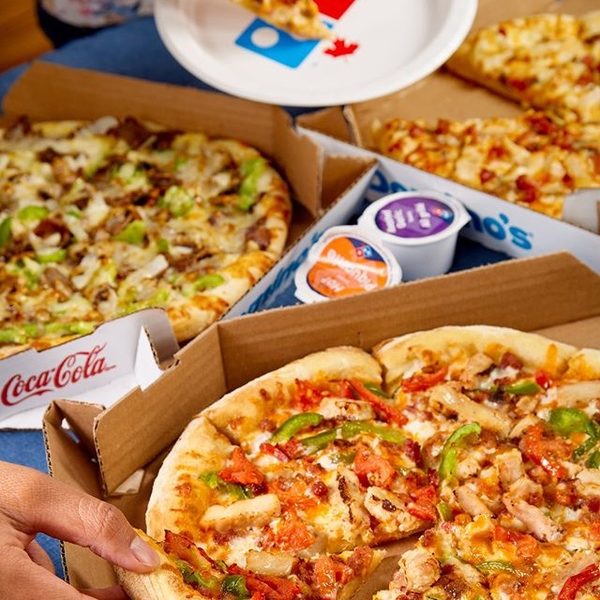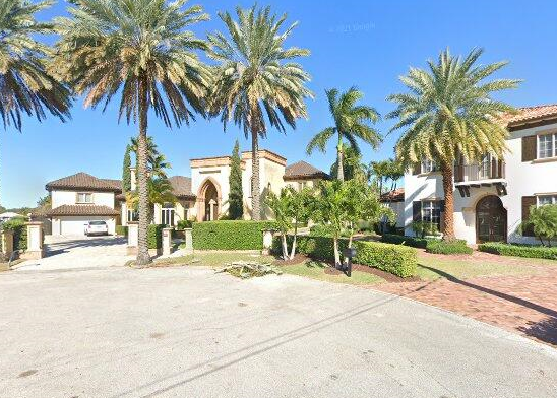Why is Domino’s So Expensive in the UK? Cost Mystery
Pizza lovers in the United Kingdom have often found themselves pondering a pressing question: “Why is Domino’s so expensive in the UK?” In a world where fast food chains usually promise affordability, it can be perplexing to see a popular pizza brand charging seemingly higher prices. If you’ve ever wondered about the factors behind the cost of your favorite Domino’s pizza, you’re not alone.
Domino’s Pizza in the UK is relatively costly due to high-quality ingredients, rent, labor expenses, and the convenience of quick delivery and customization, all of which contribute to the pricing.
So, let’s explore more about Domino’s.
Domino’s Pizza Business Model

Franchise System: Domino’s primarily expands its business through franchising. The company sells the rights to operate Domino’s Pizza stores to franchisees. These are responsible for managing day-to-day operations, including staffing, store maintenance, and adhering to company standards.
Franchise Fees: To become a Domino’s franchisee, individuals or entities must pay an upfront franchise fee. This fee grants them the right to use the brand, access the company’s proprietary recipes, and benefit from its established business system. This fee serves as a source of revenue for it.
Royalty Fees: In addition to the initial franchise fee, franchisees are required to pay ongoing royalty fees, which are typically a percentage of their sales revenue. These fees are paid to the corporate entity (Domino’s Pizza Inc.) and help support corporate-level services such as advertising, research and development, and ongoing support to franchisees.
Supply Chain Integration: It has a vertically integrated supply chain. The company operates its distribution centers for ingredients and supplies, which allows for control over the quality and consistency of ingredients used by its franchisees. This integration also provides economies of scale and helps in cost control.
Marketing and Advertising Support: It also, provides marketing and advertising support to its franchisees. This includes national and regional advertising campaigns, promotional materials, and strategies to enhance brand visibility and drive sales.
Technology and Digital Presence: It has invested heavily in technology and online ordering systems. This includes a user-friendly website, mobile apps, and innovative features like the “Pizza Tracker.” These technological advancements improve the customer experience and drive online sales.
Menu Innovation: Domino’s regularly updates its menu with new and unique pizza offerings and sides to cater to changing consumer preferences. Menu innovation is an essential aspect of the business model to keep customers engaged and maintain a competitive edge.
Quality and Consistency: It emphasizes the consistency and quality of its products. Standardized recipes, ingredient sourcing, and operational processes are crucial in maintaining a uniform customer experience across all locations.
Local Market Responsiveness: While maintaining a standardized core menu, Domino’s allows some flexibility for franchisees to adapt their offerings to local tastes and preferences. This ensures that the brand remains relevant in different markets.
International Expansion: Domino’s has a strong international presence, with a presence in numerous countries. The company adapts its menu and marketing strategies to suit local markets while maintaining the core elements of the brand.
Why Does Domino’s Command Premium Prices in the UK?
Quality Ingredients: Domino’s emphasizes the use of high-quality ingredients, and this commitment to quality comes at a cost. From the freshest vegetables to premium cheese and carefully sourced meats, the focus on superior ingredients is reflected in the price.
Labor and Wages: Labor costs in the UK are notably higher than in some other countries, and this is often reflected in the pricing of food items.The employees in the UK receive fair wages and this is factored into the overall cost structure.
Operational Expenses: Operating a food delivery business in the UK involves numerous expenses, including rent, utilities, and maintenance. These costs are naturally passed on to consumers in the form of higher prices.
Delivery Infrastructure: It invests in a robust delivery infrastructure, ensuring that your pizza arrives hot and fresh at your doorstep. This convenience comes with an associated cost, which contributes to the final price.
Regional Variation: pricing may also vary by location. Urban areas with higher living costs may have slightly more expensive pizza compared to rural areas.
Promotions and Discounts: While the base prices may seem high, Domino’s frequently offers promotions, discounts, and special deals. These can make the pizzas more affordable, especially when you take advantage of these offers.
Brand Value: As a globally recognized brand, it carries a certain level of prestige and brand value, which can affect the pricing.
Comparing Domino’s and Pizza Hut: Which Delivers a Bigger Bill?
In the realm of pizza delivery giants, Domino’s and Pizza Hut stand tall as the go-to choices for those craving a slice of cheesy heaven. The age-old debate over which of these titans is the pricier pick continues to simmer.
Moreover, to put an end to this culinary conundrum, let’s dissect their online menus, all while keeping our gaze fixed on branches nestled in the Sheffield area. Please bear in mind that this cost analysis doesn’t account for tantalizing deals or mouthwatering discounts, so a savvy shopper should always scout for special offers before placing an order.
Margherita Pizza: First on our flavor-filled journey, the classic Margherita. Pizza Hut extends a large Margherita for £17.49, whereas its Domino’s counterpart sports a price tag of £17.99. The verdict? Pizza Hut emerges as the slightly thriftier choice when it comes to the simplicity of a Margherita pie.
Pepperoni Pizza: Let’s spice it up with the perennial favorite, Pepperoni. Domino’s demands a sum of £20.99 for a large Pepperoni pizza, and intriguingly, so does Pizza Hut. In the realm of pepperoni lovers, it’s a harmonious tie between these two behemoths.
Vegan Pepperoni: For plant-based patrons, a pleasant surprise awaits. Both Pizza Hut and Domino’s graciously serve up a vegan rendition of the beloved pepperoni pizza. Pizza Hut’s Vegan Pepperphoni pizza carries a price tag of £22.19, while Domino’s Vegan PepperoNAY is offered at a more wallet-friendly £20.99. Vegans, rejoice, for Domino’s emerges as the budget-friendly choice.
How To Make Domino Pizza

Domino Pizza Ingredients
- Domino’s opts for unbleached Italian “00” flour, which, though pricier than regular plain flour, accounts for approximately 25% of the total pizza cost.
- Constituting around 55-60% of the dough by weight, water is a cost-effective ingredient.
- Yeast, while more expensive than flour or water, comprises a modest 4% of the dough’s weight.
- Salt, making up only about 1-2% of the dough, is another economical ingredient.
- Sauce contributes about 10% to the total pizza cost. Domino’s uses tomato paste, a product derived from hours of cooking down several tomatoes to achieve rich flavor.
- Cheese, accounting for approximately 10% of the total cost, is an area where Domino’s excels. While not excessively costly, quality cheese is pricier than lower-quality alternatives like mozzarella.
- Toppings, at roughly 15% of the total cost, can vary in price, with meat toppings like chicken generally costing more than vegetable options such as tomatoes.
Dominos Pizza Recipe
Here’s a breakdown of Domino’s 8-step dough-making process that contributes to its distinctive taste:
Autolyse: After combining the ingredients in a large bowl, they are mixed for around 3 minutes in a process called autolyze. This step allows the dough to rest and hydrate, reducing mixing time and minimizing unwanted flavors in the dough.
Mixing: Post-autolyse, the dough is mixed at low speed for approximately 5 minutes, explaining the characteristic noise of Domino’s dough mixers.
Bulk Fermentation: The dough undergoes bulk fermentation in a temperature-controlled proofing cabinet for 1-2 hours, during which it rises and doubles in size.
Punch Down: The dough is punched down to degas it, redistribute the yeast, and prepare the dough for rolling.
Stretch and Form: After punching down, the dough is divided and shaped into balls, ready for rolling using a sheeter.
Proofing: The dough undergoes a staged proofing process in a specialized cabinet maintaining a constant +28°C temperature and 95% humidity. This encourages the dough to rise and form its characteristic airy structure.
Rolling: After proofing, the dough is rolled out with a sheeter and then topped with sauce, cheese, and toppings.
Oven: The pizza is baked in a conventional deck oven at 250°C (482°F) for 8-9 minutes.
FAQs
What Is The Cheapest Item At Domino’s?
If you’re on the hunt for the most budget-friendly pizza at Domino’s, you’ll typically discover that the lowest-priced option is the classic Margherita. This pizza keeps it simple with a delightful combination of cheese and tomato sauce. You’ll save a bit because you’re not paying for additional toppings found on more intricate pizzas.
How Much Are Dominos Pizzas?
The cost of a Dominos pizza varies based on the pizza’s size and the toppings you select. To provide an example, in Sheffield in 2022, a large Margherita pizza from Dominos was priced at £17.99, while a large Pepperoni pizza was listed at £20.99.
How Much Is Domino Delivery in the UK?
Surprisingly, having a piping-hot Domino pizza delivered to your doorstep in the UK is typically free. It’s advisable to check with your specific branch before ordering, as there may be occasional delivery charges. Alternatively, you can opt to collect your Dominos order from your local branch, either by calling the store directly or using the Dominos app or website.
Why Is Dominos So Popular?
Dominos has gained popularity thanks to its highly customizable menu. This means you can select the size of your pizza and the specific toppings you desire. Additionally, Dominos offers gluten-free and vegan options. Ordering online or through their app provides the convenience of choosing delivery or pickup.
How Can I Economize on Domino’s Orders?
The most effective way to save on a Domino’s pizza is by placing your order online and selecting the deal that best suits your preferences. Many branches offer discounts for online orders, and you’ll find special deals when ordering multiple pizzas or opting to pick up your order in-store.
Is Domino’s Pizza Overrated?
While some pizzerias might be pricier than Domino’s, it’s important to consider that you get what you pay for. While certain high street restaurants may offer inexpensive pizza during lunchtime deals, the quality of ingredients often differs, impacting the taste and presentation of the dish.
Can I Request a Pizza Without Sauce from Domino?
Certainly, if you prefer a pizza without sauce, you can customize your order using the app or by directly contacting the store.
How Many Slices Are in a Large Domino’s Pizza?
If you’re thinking of ordering a large Domino’s pizza, you may be wondering how many slices you’ll receive. Typically, a large Domino’s pizza is cut into 10 pieces, making it an ideal choice for sharing with a group of friends or family.
Can You Enjoy Pizza the Day After?
Should you find yourself with leftover pizza, you might be contemplating whether it’s safe to enjoy the next day. The good news is that properly stored leftover pizza can be safely consumed the following day. Refrigerating it overnight is crucial. To reheat, you can use an oven, microwave, or even an air fryer to ensure it reaches a temperature that eliminates any potential bacteria. So, you can relish that delicious slice from the day before without worry.
Final Words
In conclusion, several factors contribute to Domino’s Pizza being relatively expensive in the UK. The quality of ingredients, such as Italian “00” flour and flavorful tomato paste, plays a pivotal role in driving up costs.
Moreover, labor expenses, adherence to labor regulations, and real estate costs add to the overall pricing. The convenience of quick delivery, customization, and branding efforts also contribute to the higher prices compared to other options. While it may come at a premium, many customers are willing to pay for the quality, variety, and convenience it offers, making it a popular choice in the UK pizza market.







